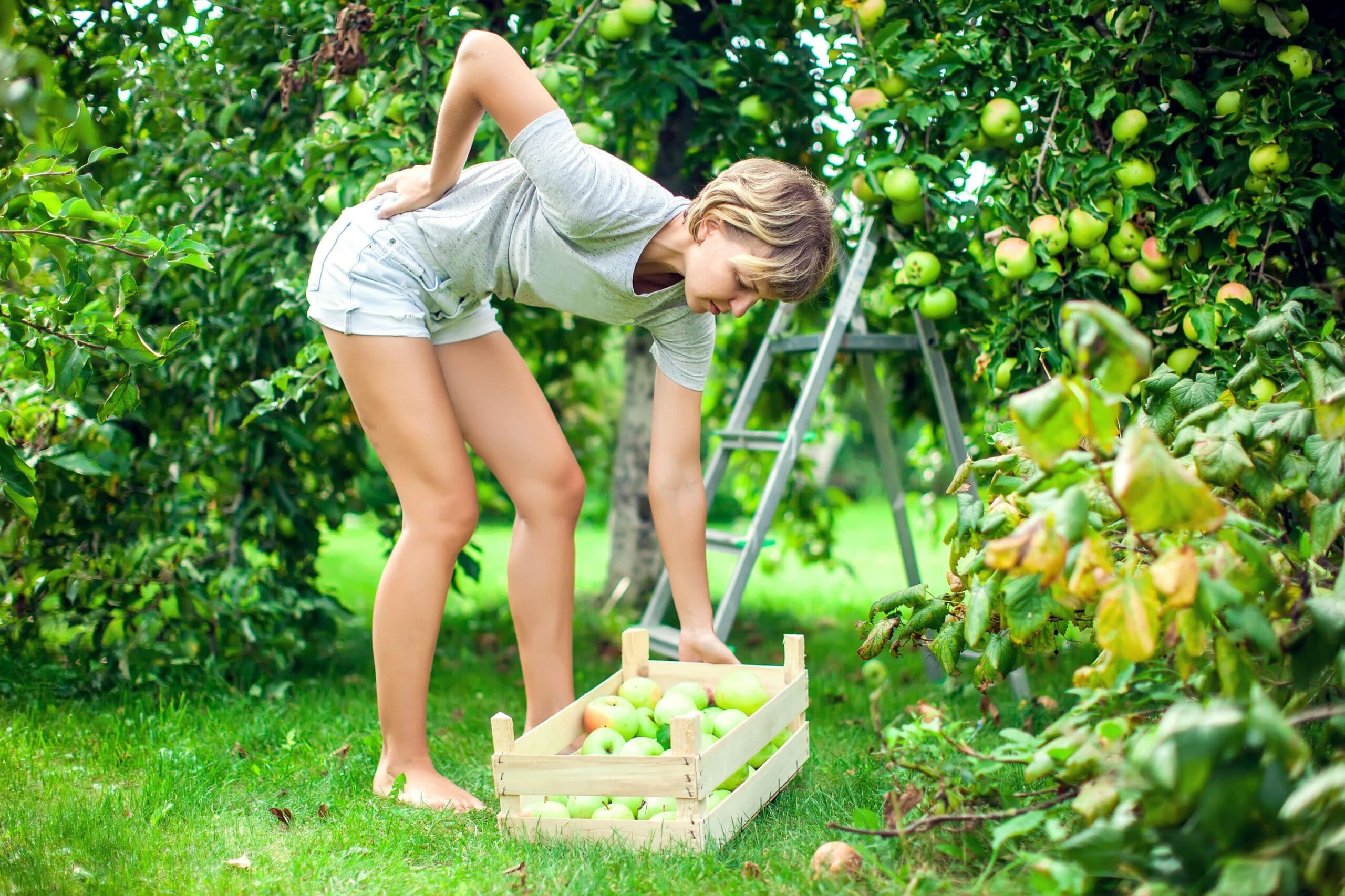Oh, the aches and pains of gardening! The digging, weeding, lifting and completing endless repetitive tasks can leave even the hardiest of gardeners reaching for the painkillers in a vain attempt to soothe their aching back and joints. But there are ways to alleviate it.
“Maintaining good posture is always important, but more so in the colder months,” says Julie Jennings, an independent occupational therapist at wellness and furniture brand HSL.
“As temperatures drop, it is important to maintain good posture to encourage circulation and mobility. Adopting poor posture can lead to unwanted health hiccups such as aches and pains, fatigue, loss of movement, loss of independence, weight gain and poor circulation.
“Research has shown that back pain is a leading cause of disability. Through understanding the benefits of good posture, you can greatly improve your health and wellbeing, giving you more time to do the things you most enjoy – such as gardening.”
To help keen gardeners prepare their outdoor space for winter without compromising their health, Jennings has pulled together her top tips on how to avoid the most common gardening-related postural gripes.
1 Clearing and pruning plants
The problem: Deadheading autumn plants and pruning summer-flowering shrubs are popular gardening activities around this time of year.
Naturally, gardening works many different muscles and clearing and pruning plants can put strain on core joints such as your knees and elbows. It also requires a lot of bending over which can lead to an unnatural curve in our spine.

The solution: To avoid adopting poor posture, be aware of your posture and try to keep your back as straight as possible, and prevent your neck and shoulders from slouching forwards. Take regular ‘posture breaks’, making sure you stand up and stretch to ease out any tension that is developing.
2. Digging garden beds
The problem: A common gardening task, digging garden beds allows the winter frost to break up soil, improving its structure, but can lead to backache and other joint problems.

The solution: Maintain a healthy posture when digging by utilising gardening tools such as a wheelbarrow, trolley or garden stool. Use ergonomic digging tools to take pressure off your joints and avoid straining your back. Look for tools with cushioned handles that can really help arthritic hands.
3. Planting bulbs
The problem: Digging repetitively into garden beds to plant your bulbs can encourage poor posture.
The solution: Make the most of tools such as ergonomically designed spades to ensure that you’re not placing any unnecessary strain on your wrists, elbows, or back.
If your tools are cushioned, lightweight and sharper, they’ll be more effective and you’ll naturally find yourself adopting a better posture and getting fewer aches and pains as a result. It will also help with pre-existing conditions such as arthritis or backache.
4. Tidying and cleaning your gardening tools ahead of spring
The problem: Sharpening tools and fixing loose spade handles should be straightforward but many gardeners don’t stand up properly to do the job.
The solution: Try to clean them while standing up straight and use a table for support to avoid hunching over them. It may sound counterproductive, but try not to put too much ‘elbow grease’ into cleaning your gardening tools.
When we clean, we tend to use our dominant side more than the other, which can place added tension and strain on our joints.
If you have time, soak your tools to take pressure off your joints and save you from building up any tension in your shoulders while cleaning.
5. Landscaping repairs
The problem: When undertaking landscaping repairs throughout the winter months, there can be many health and safety factors to consider such as heavy lifting, repaving stones and pressure-washing slippery paths.

The solution: To make sure you’re looking after your posture, tackle these tasks little by little rather than in one big go. This will prevent overuse of all important joints and muscles, in addition to your spine.
When lifting anything, always ensure that your back is as straight as possible to avoid injury. Equally, try not to fall into the habit of slouching, crouching, or leaning while undertaking repair work.
And finally… do other exercise

Jennings says: “I always encourage people to engage in exercises outside of gardening that will encourage flexibility to take care of your posture.
Maintaining a good level of flexibility and core muscle strength will go a long way in helping your body cope with the strain of gardening, ultimately decreasing the risk of any back pain or long-term damage caused by poor posture.
“Finally, remember gardening can be a strenuous physical activity and you should prepare your body for this workout beforehand.
Do simple stretches to loosen up your joints and warm your muscles before you start. You’re more likely to suffer an injury when your body isn’t prepared for the activity ahead.”





